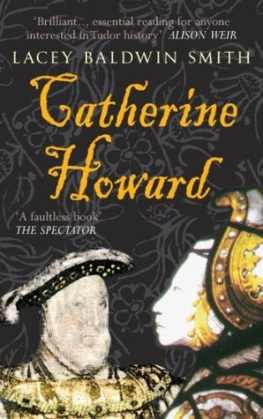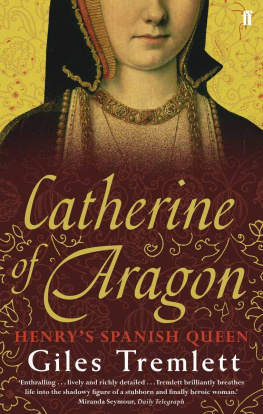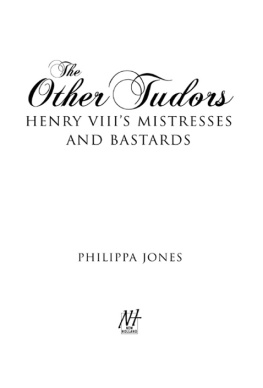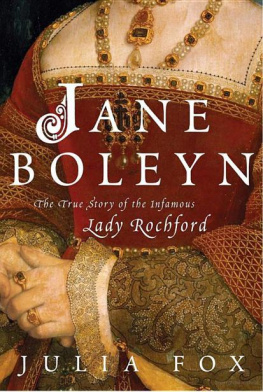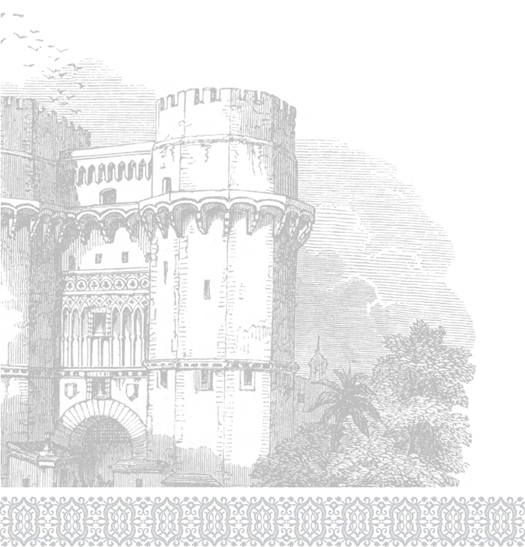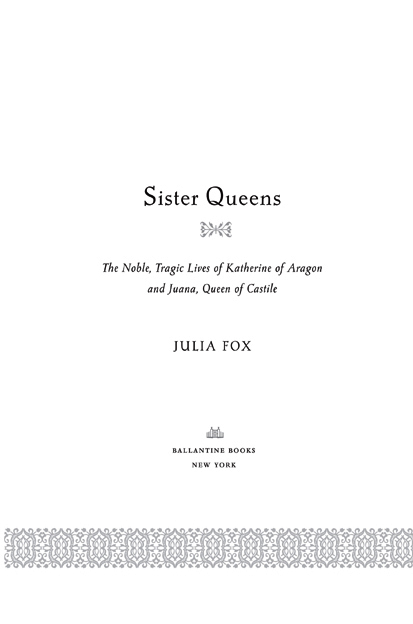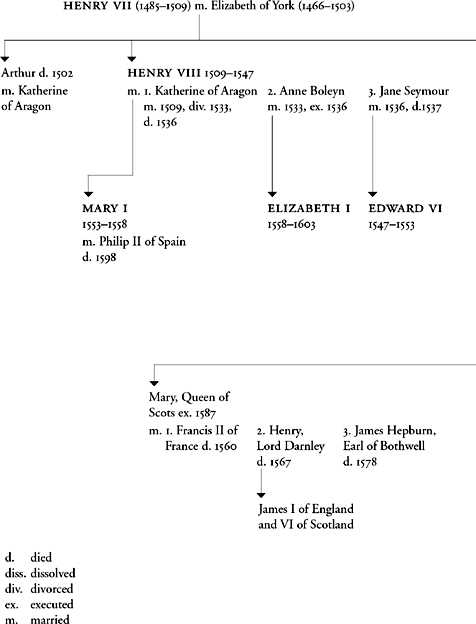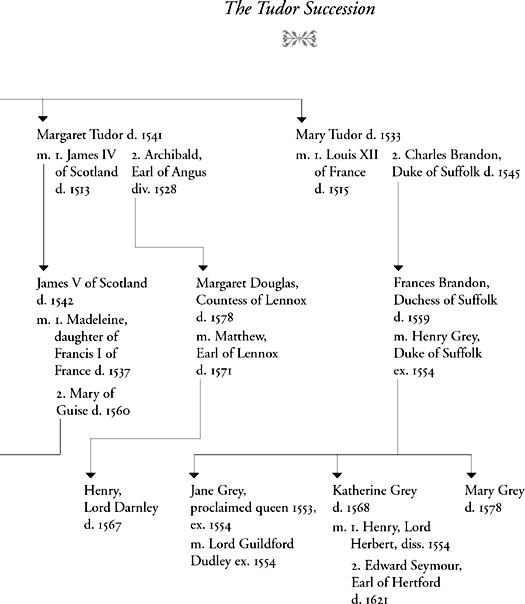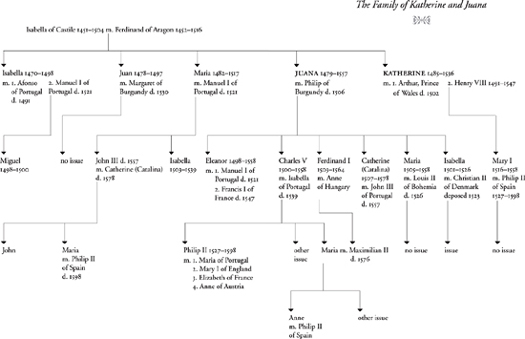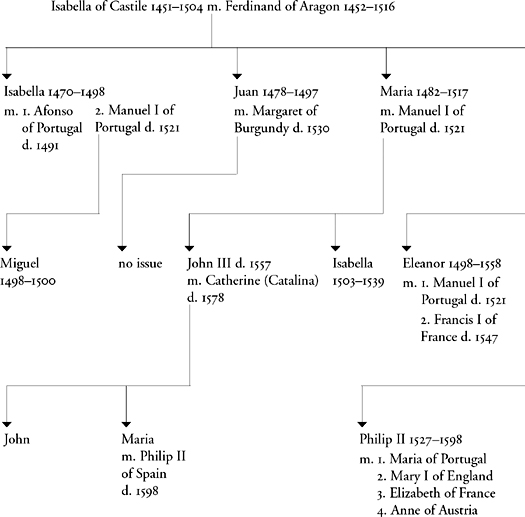of Aragon Queen consort of Henry VIII King of England - Sister queens : the noble, tragic lives of Katherine of Aragon and Juana, Queen of Castile
Here you can read online of Aragon Queen consort of Henry VIII King of England - Sister queens : the noble, tragic lives of Katherine of Aragon and Juana, Queen of Castile full text of the book (entire story) in english for free. Download pdf and epub, get meaning, cover and reviews about this ebook. City: New York, Great Britain, Spain, Spain., Great Britain., England, year: 2011, publisher: Random House Publishing Group;Ballantine Books, genre: Non-fiction. Description of the work, (preface) as well as reviews are available. Best literature library LitArk.com created for fans of good reading and offers a wide selection of genres:
Romance novel
Science fiction
Adventure
Detective
Science
History
Home and family
Prose
Art
Politics
Computer
Non-fiction
Religion
Business
Children
Humor
Choose a favorite category and find really read worthwhile books. Enjoy immersion in the world of imagination, feel the emotions of the characters or learn something new for yourself, make an fascinating discovery.

- Book:Sister queens : the noble, tragic lives of Katherine of Aragon and Juana, Queen of Castile
- Author:
- Publisher:Random House Publishing Group;Ballantine Books
- Genre:
- Year:2011
- City:New York, Great Britain, Spain, Spain., Great Britain., England
- Rating:5 / 5
- Favourites:Add to favourites
- Your mark:
Sister queens : the noble, tragic lives of Katherine of Aragon and Juana, Queen of Castile: summary, description and annotation
We offer to read an annotation, description, summary or preface (depends on what the author of the book "Sister queens : the noble, tragic lives of Katherine of Aragon and Juana, Queen of Castile" wrote himself). If you haven't found the necessary information about the book — write in the comments, we will try to find it.
Historian Fox offers this first dual biography of the daughters of Spains Ferdinand and Isabella whose entwined royal relationships helped define the 15th- and 16th-century European political landscape. Read more...
Abstract: The history books have cast Katherine of Aragon, the first queen of King Henry VIII of England, as the ultimate symbol of the betrayed woman, cruelly tossed aside in favor of her husbands seductive mistress, Anne Boleyn. Katherines sister, Juana of Castile, wife of Philip of Burgundy and mother of the Holy Roman Emperor Charles V, is portrayed as Juana the Mad, whose erratic behavior included keeping her beloved late husbands coffin beside her for years. But historian Julia Fox, whose previous work painted an unprecedented portrait of Jane Boleyn, Annes sister-in-law, offers deeper insight in this first dual biography of Katherine and Juana, the daughters of Spains Ferdinand and Isabella, whose family ties remained strong despite their separation. Looking through the lens of their Spanish origins, Fox reveals these queens as flesh-and-blood women -- equipped with character, intelligence, and conviction -- who are worthy historical figures in their own right. When they were young, Juanas and Catherines futures appeared promising. They had secured politically advantageous marriages, but their dreams of love and power quickly dissolved, and the unions for which theyd spent their whole lives preparing were fraught with duplicity and betrayal. Juana, the elder sister, unexpectedly became Castiles sovereign, but her authority was continually usurped, first by her husband and her father and later by her son. Katherine, a young widow after the death of Prince Arthur of Wales, soon remarried his doting brother Henry and later became a key figure in a drama that altered Englands religious landscape. Ousted from the positions of power and influence they had been groomed for and separated from their children, Katherine and Juana each turned to their rich and abiding faith and deep personal belief in their familys dynastic legacy to cope with their enduring hardships. Sister Queens is a gripping tale of love, duty, and sacrifice -- a remarkable reflection on the conflict between ambition and loyalty during an age when the greatest sin, it seems, was to have been born a woman. - Jacket flap.
Historian Fox offers this first dual biography of the daughters of Spains Ferdinand and Isabella whose entwined royal relationships helped define the 15th- and 16th-century European political landscape
of Aragon Queen consort of Henry VIII King of England: author's other books
Who wrote Sister queens : the noble, tragic lives of Katherine of Aragon and Juana, Queen of Castile? Find out the surname, the name of the author of the book and a list of all author's works by series.


